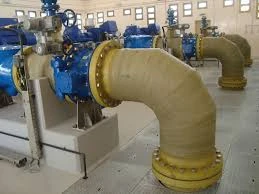
-
 Afrikaans
Afrikaans -
 Albanian
Albanian -
 Amharic
Amharic -
 Arabic
Arabic -
 Armenian
Armenian -
 Azerbaijani
Azerbaijani -
 Basque
Basque -
 Belarusian
Belarusian -
 Bengali
Bengali -
 Bosnian
Bosnian -
 Bulgarian
Bulgarian -
 Catalan
Catalan -
 Cebuano
Cebuano -
 China
China -
 China (Taiwan)
China (Taiwan) -
 Corsican
Corsican -
 Croatian
Croatian -
 Czech
Czech -
 Danish
Danish -
 Dutch
Dutch -
 English
English -
 Esperanto
Esperanto -
 Estonian
Estonian -
 Finnish
Finnish -
 French
French -
 Frisian
Frisian -
 Galician
Galician -
 Georgian
Georgian -
 German
German -
 Greek
Greek -
 Gujarati
Gujarati -
 Haitian Creole
Haitian Creole -
 hausa
hausa -
 hawaiian
hawaiian -
 Hebrew
Hebrew -
 Hindi
Hindi -
 Miao
Miao -
 Hungarian
Hungarian -
 Icelandic
Icelandic -
 igbo
igbo -
 Indonesian
Indonesian -
 irish
irish -
 Italian
Italian -
 Japanese
Japanese -
 Javanese
Javanese -
 Kannada
Kannada -
 kazakh
kazakh -
 Khmer
Khmer -
 Rwandese
Rwandese -
 Korean
Korean -
 Kurdish
Kurdish -
 Kyrgyz
Kyrgyz -
 Lao
Lao -
 Latin
Latin -
 Latvian
Latvian -
 Lithuanian
Lithuanian -
 Luxembourgish
Luxembourgish -
 Macedonian
Macedonian -
 Malgashi
Malgashi -
 Malay
Malay -
 Malayalam
Malayalam -
 Maltese
Maltese -
 Maori
Maori -
 Marathi
Marathi -
 Mongolian
Mongolian -
 Myanmar
Myanmar -
 Nepali
Nepali -
 Norwegian
Norwegian -
 Norwegian
Norwegian -
 Occitan
Occitan -
 Pashto
Pashto -
 Persian
Persian -
 Polish
Polish -
 Portuguese
Portuguese -
 Punjabi
Punjabi -
 Romanian
Romanian -
 Russian
Russian -
 Samoan
Samoan -
 Scottish Gaelic
Scottish Gaelic -
 Serbian
Serbian -
 Sesotho
Sesotho -
 Shona
Shona -
 Sindhi
Sindhi -
 Sinhala
Sinhala -
 Slovak
Slovak -
 Slovenian
Slovenian -
 Somali
Somali -
 Spanish
Spanish -
 Sundanese
Sundanese -
 Swahili
Swahili -
 Swedish
Swedish -
 Tagalog
Tagalog -
 Tajik
Tajik -
 Tamil
Tamil -
 Tatar
Tatar -
 Telugu
Telugu -
 Thai
Thai -
 Turkish
Turkish -
 Turkmen
Turkmen -
 Ukrainian
Ukrainian -
 Urdu
Urdu -
 Uighur
Uighur -
 Uzbek
Uzbek -
 Vietnamese
Vietnamese -
 Welsh
Welsh -
 Bantu
Bantu -
 Yiddish
Yiddish -
 Yoruba
Yoruba -
 Zulu
Zulu
frp fuel tank
Understanding FRP Fuel Tanks A Modern Approach to Fuel Storage
In recent years, the demand for efficient and durable fuel storage solutions has led to the increasing popularity of Fiber Reinforced Plastic (FRP) fuel tanks. Known for their lightweight, corrosion-resistant properties, FRP tanks present a modern alternative to traditional metal tanks, making them an attractive option for various industries, including aviation, automotive, and marine sectors.
What is FRP?
Fiber Reinforced Plastic is a composite material made from a polymer matrix reinforced with fibers, typically glass or carbon. This combination of materials results in a tank that is not only lightweight but also boasts superior strength and longevity compared to conventional steel or aluminum tanks. The use of composite materials reduces the risk of rust and corrosion, which are significant issues associated with metal tanks, particularly in harsh environments.
Advantages of FRP Fuel Tanks
1. Corrosion Resistance One of the most significant benefits of FRP fuel tanks is their resistance to corrosion. Traditional metal tanks often succumb to rust, especially when exposed to moisture and various chemicals. In contrast, FRP tanks maintain their integrity over time, reducing maintenance costs and the likelihood of leaks.
2. Lightweight FRP tanks are considerably lighter than their metal counterparts. This lightweight characteristic can lead to cost savings in transportation and installation, as well as improved fuel efficiency in vehicles and vessels that utilize these tanks.
frp fuel tank

3. Customizable Designs FRP allows for greater flexibility in design, enabling manufacturers to create tanks that meet specific project requirements. Whether it’s a bespoke shape or dimension, FRP can be molded to fit various spaces, making it a versatile choice for different applications.
4. Long Lifespan FRP tanks have a much longer lifespan compared to traditional tanks. They can withstand extreme temperatures and environmental stressors without degrading, making them an ideal choice for long-term fuel storage solutions.
5. Environmental Impact The durability and longevity of FRP tanks also mean reduced environmental impact. Fewer replacements are needed over time, leading to less waste and decreased consumption of resources.
Applications of FRP Fuel Tanks
FRP fuel tanks are suitable for a wide range of applications. In the aviation industry, they are used for storing fuel in aircraft due to their lightweight properties and resistance to high-pressure environments. In the marine sector, FRP tanks are beneficial for storing fuel on boats, where weight and corrosion are critical considerations. Additionally, industrial applications often utilize FRP tanks for chemical storage, thereby leveraging their resistance to various corrosive substances.
Conclusion
As industries continue to seek innovative solutions for fuel storage, FRP fuel tanks emerge as a leading choice due to their numerous advantages. With their resistance to corrosion, lightweight nature, long lifespan, and customizable designs, FRP tanks are redefining the standards for fuel storage. As awareness of these benefits increases, it is likely that FRP tanks will play an even more significant role in various sectors, paving the way for safer, more efficient fuel management practices.









